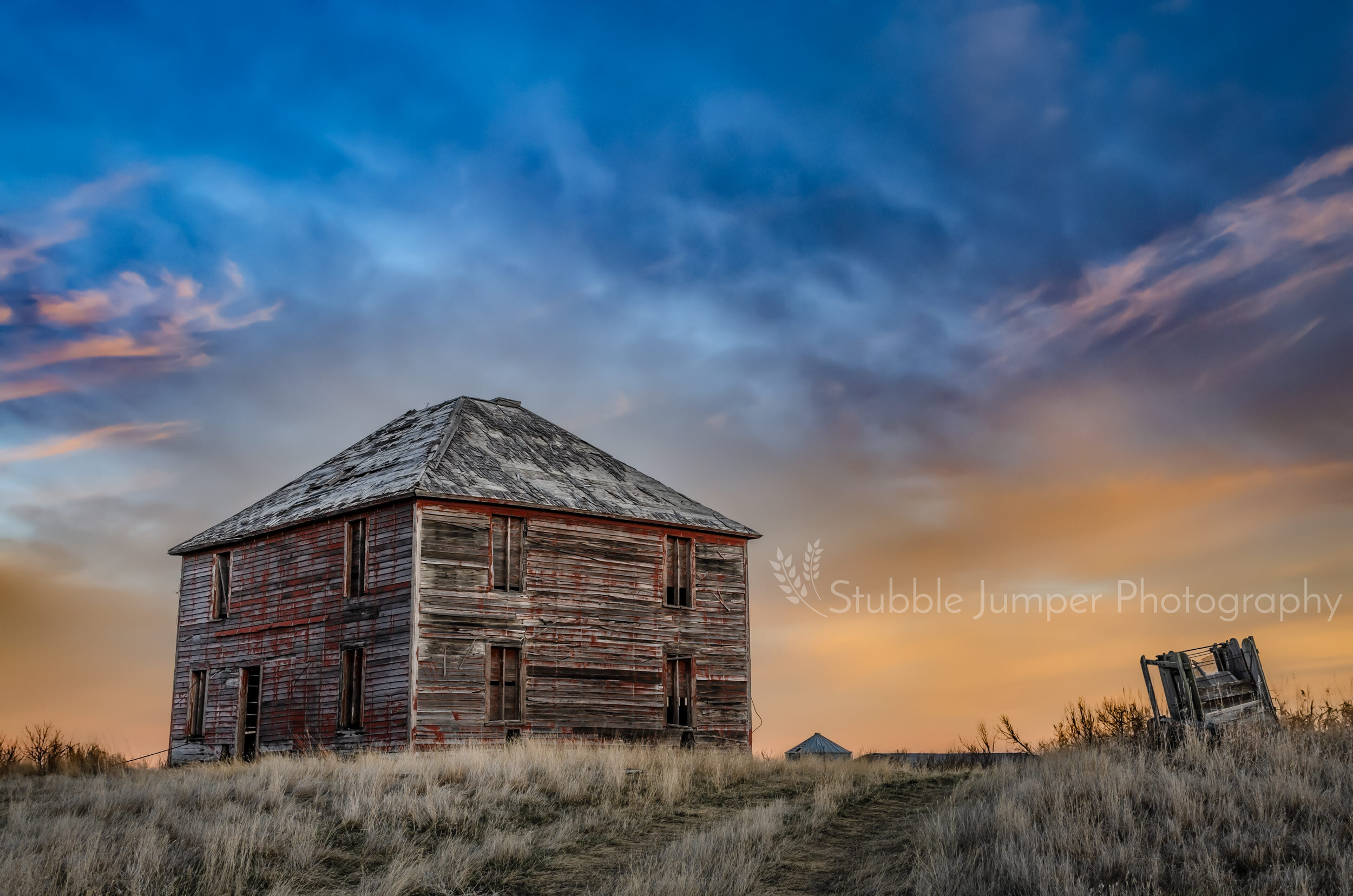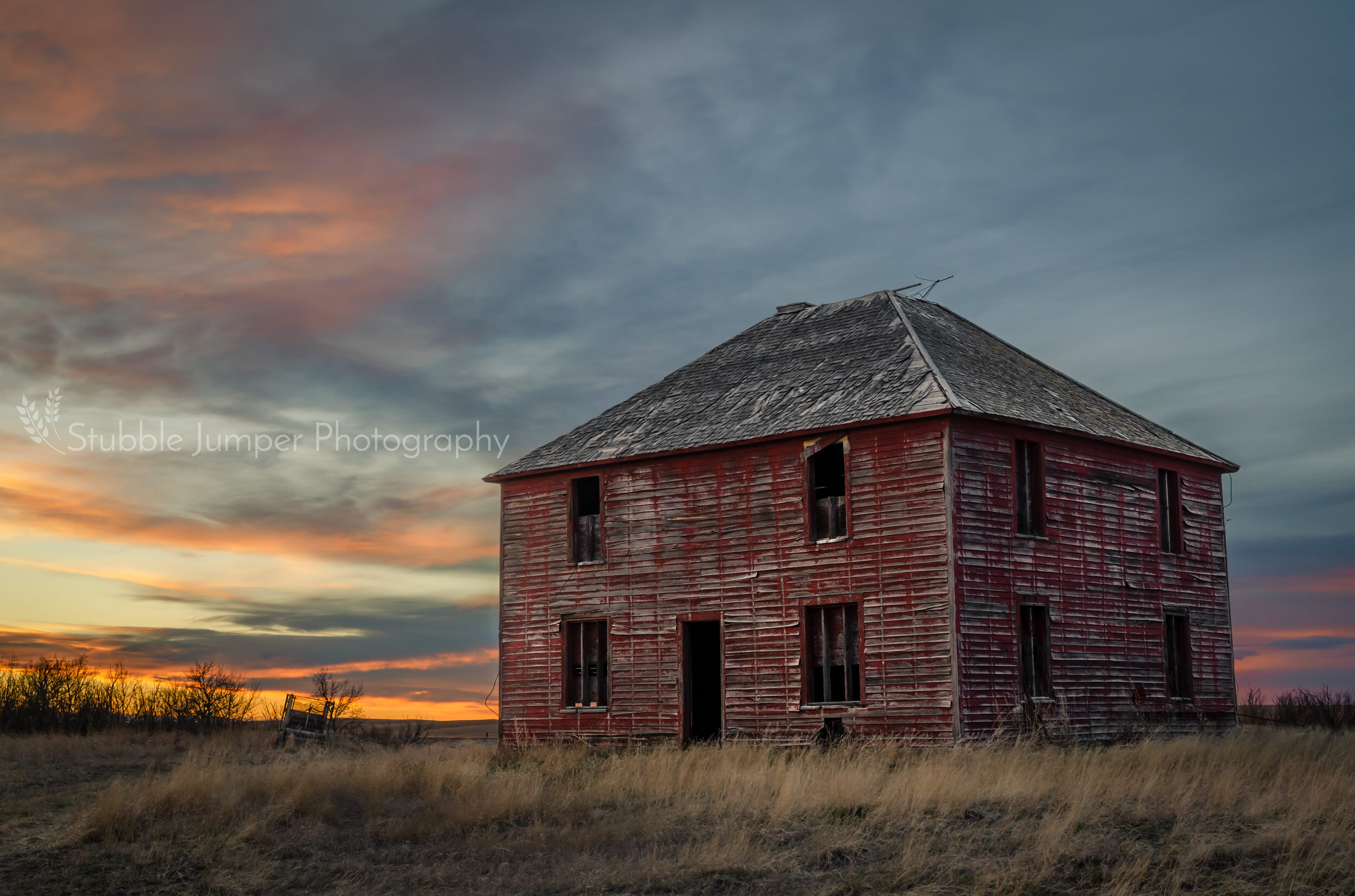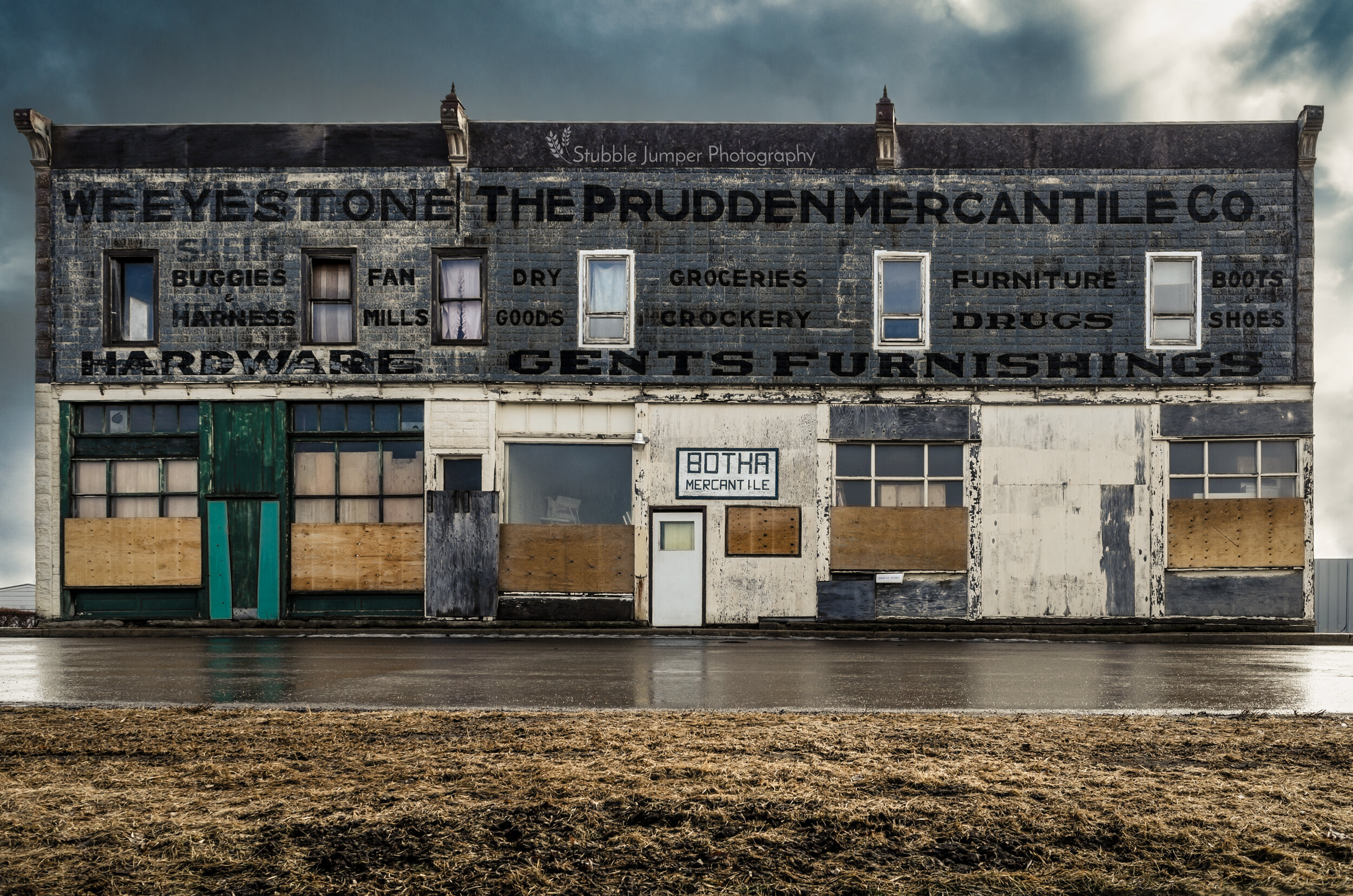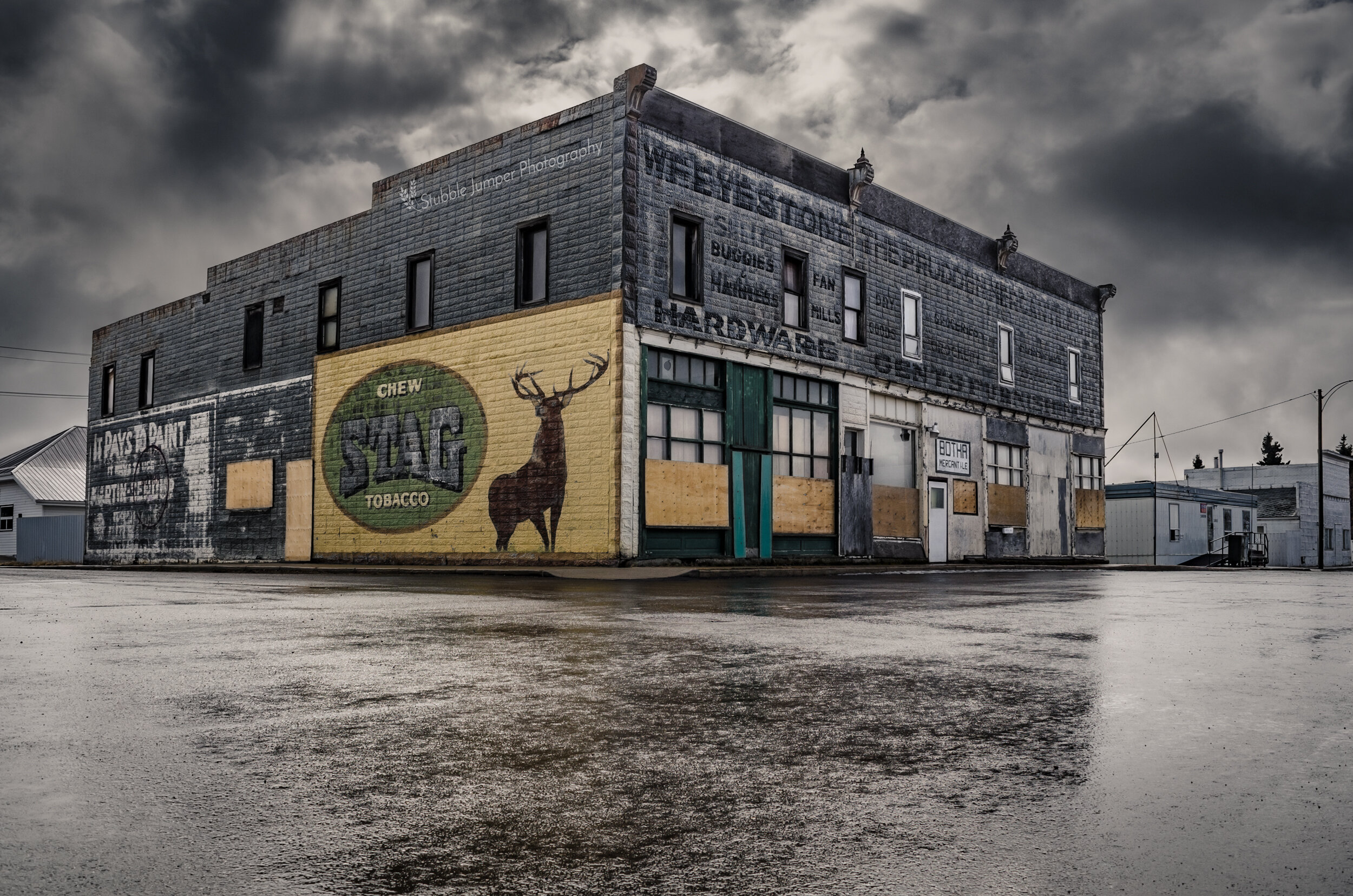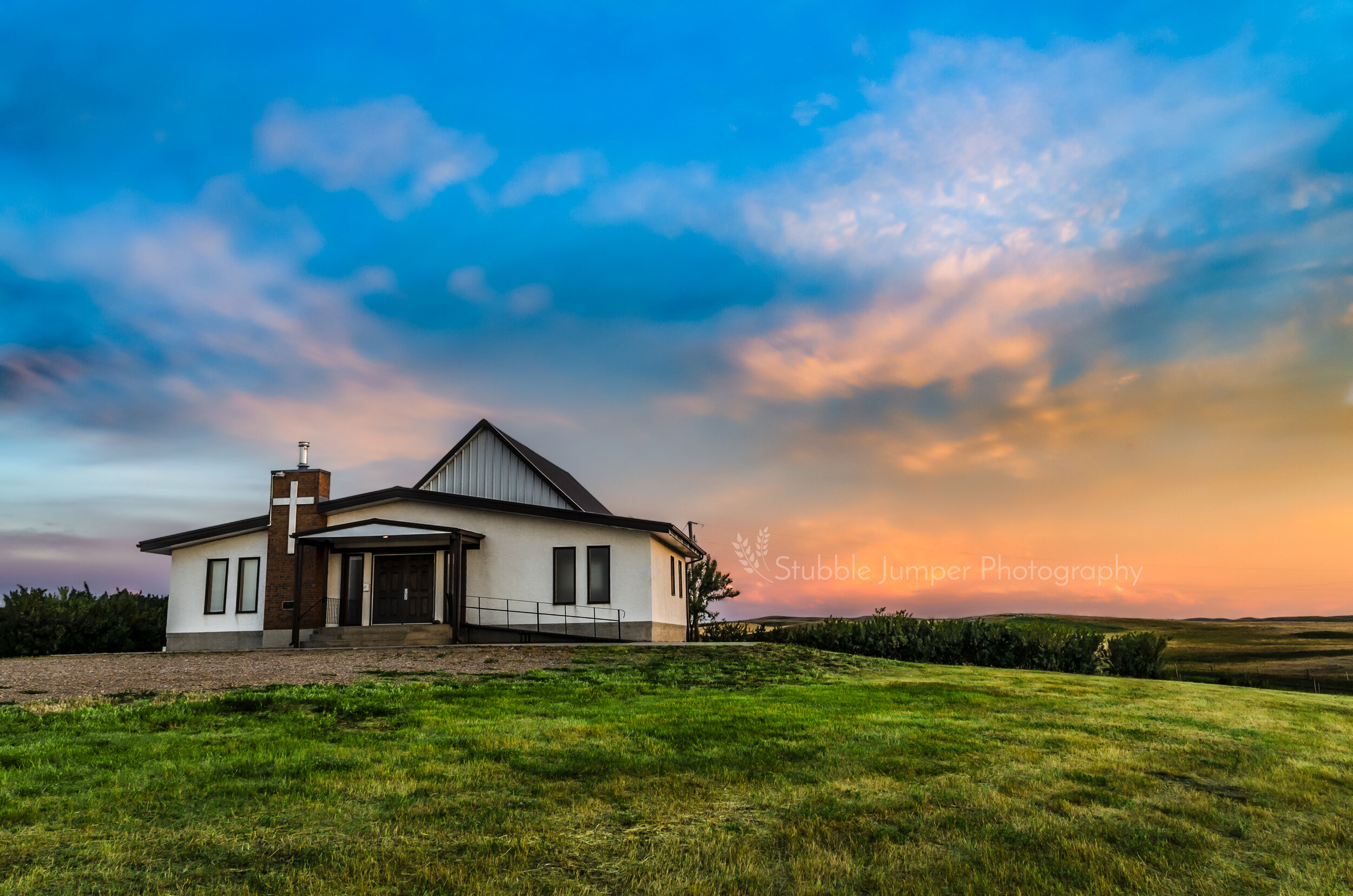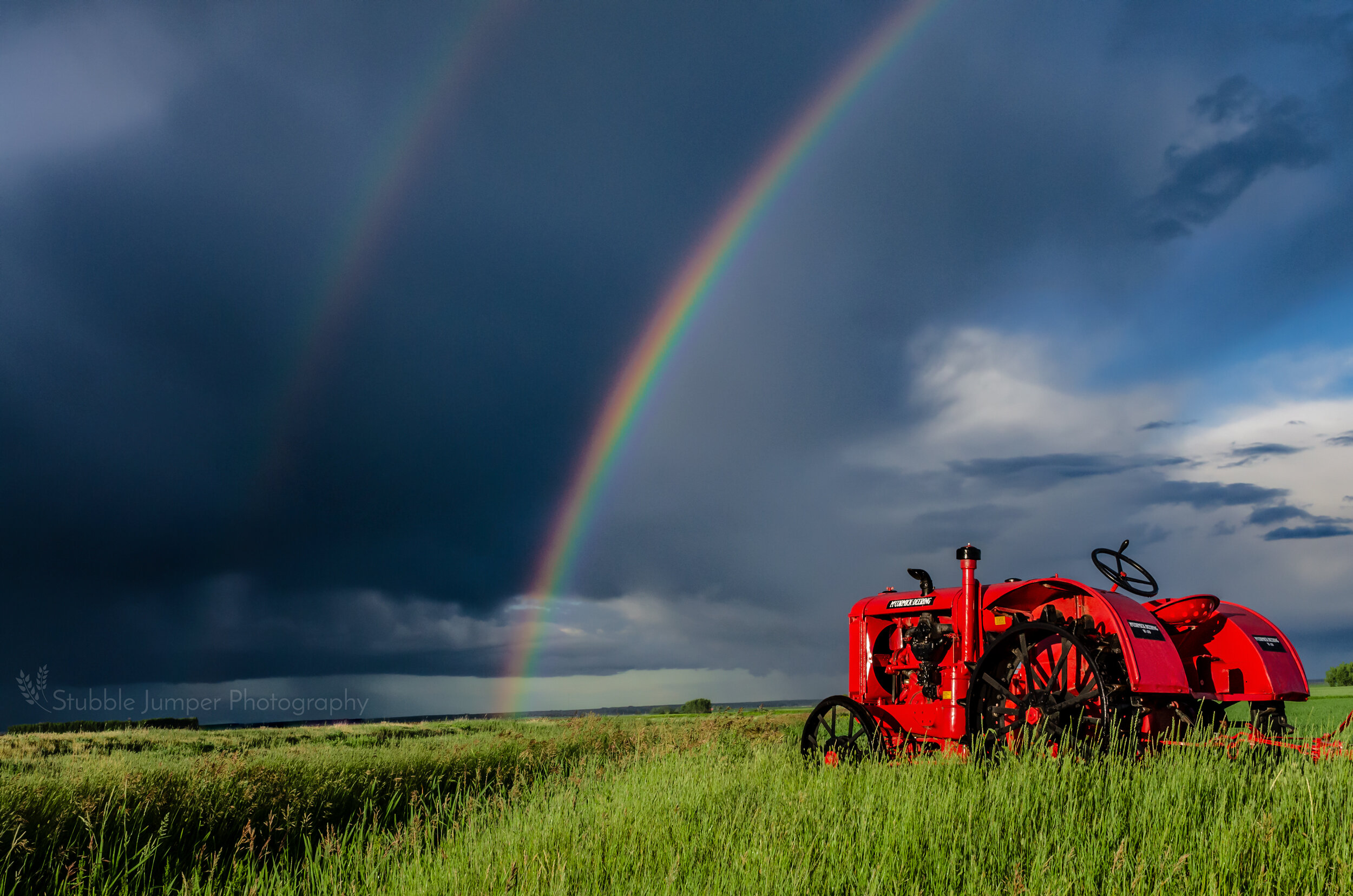The Rollags came from Norway and lived in the United States before settling in Alberta. In Spring of 1909, arriving ahead of their families, the four Rollag brothers and their father traveled by train to Taber, Alberta, with all of their farm machinery, livestock, and household items. From Taber, they traveled overland to Halvor Rollag’s homestead land. Once on the homestead land, a shack was constructed on the northeast corner of the property. Over the summer, a large two-story house was built with lumber purchased at the lumber yard in New Dayton. The house was regarded as the most extravagant in the area. A Christmas party was held at the Rollag home in 1909, with 44 guests present. On Easter Sunday in 1910, the house was threatened by a large prairie fire. Thankfully, a slough and fire break kept the fire away.
In 1944 Mr. and Mrs. Rollag moved to Lethbridge, where Mr. Rollag worked in the real estate business. The Halvor Rollag homestead was sold to Graydon Ingram, who took up farming after being held as a prisoner of war during his service in the Royal Canadian Air Force. At some point, the second floor was removed so the house could be used for grain storage. Mr. Ingram farmed the land until his death, at which time he left the land to his nieces and nephews, who sold it to the current owner in 2007.

